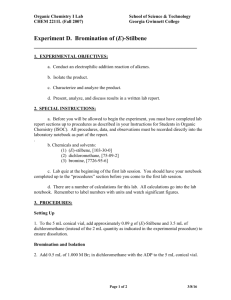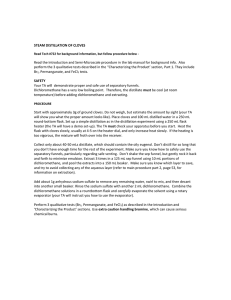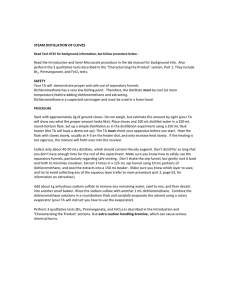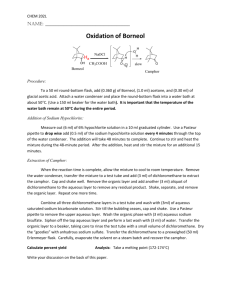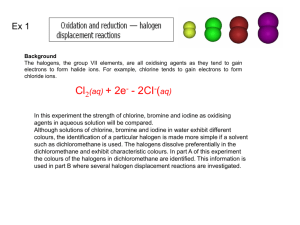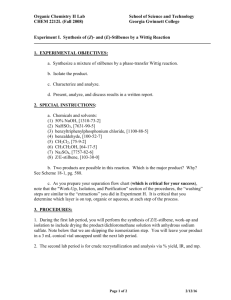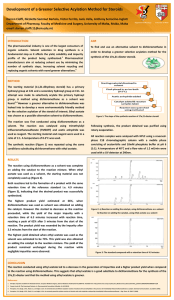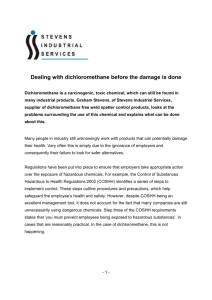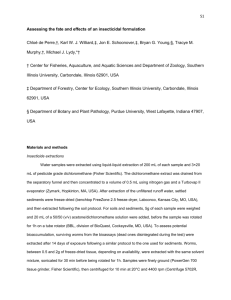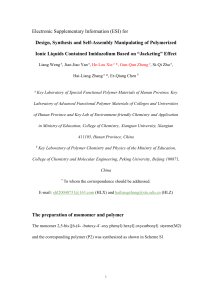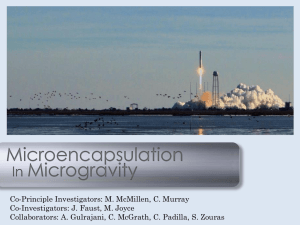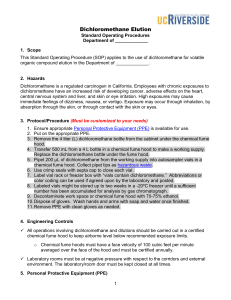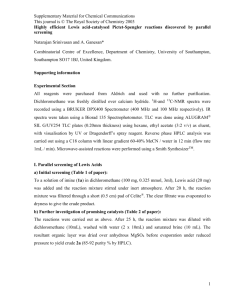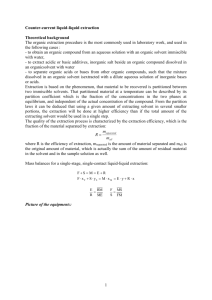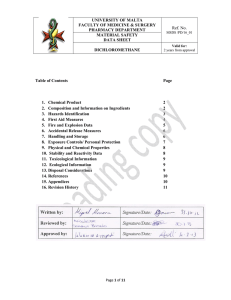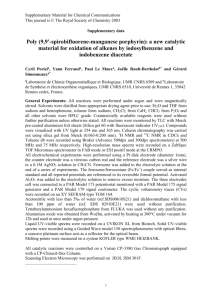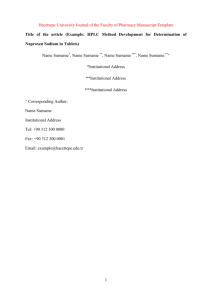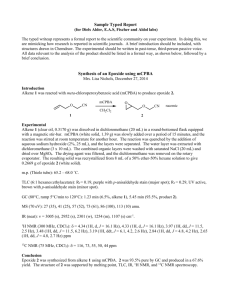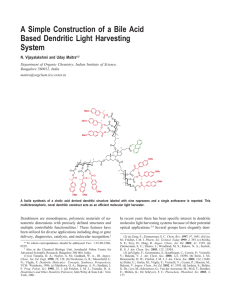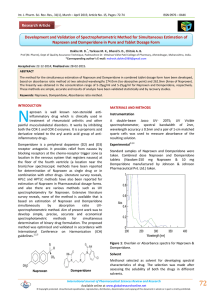Running Head: CHIRAL INVERSION OF NAPROXEN IN AN
advertisement
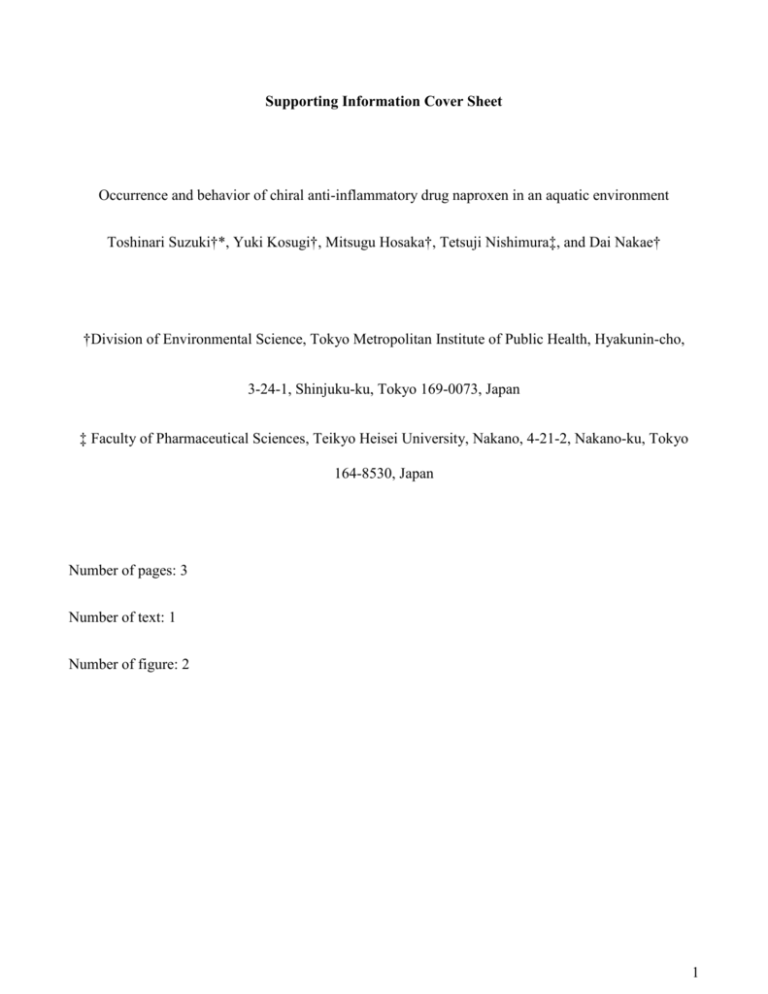
Supporting Information Cover Sheet Occurrence and behavior of chiral anti-inflammatory drug naproxen in an aquatic environment Toshinari Suzuki†*, Yuki Kosugi†, Mitsugu Hosaka†, Tetsuji Nishimura‡, and Dai Nakae† †Division of Environmental Science, Tokyo Metropolitan Institute of Public Health, Hyakunin-cho, 3-24-1, Shinjuku-ku, Tokyo 169-0073, Japan ‡ Faculty of Pharmaceutical Sciences, Teikyo Heisei University, Nakano, 4-21-2, Nakano-ku, Tokyo 164-8530, Japan Number of pages: 3 Number of text: 1 Number of figure: 2 1 Text S1 Synthesis of DM-NAP A 520 mg of (Rac)-NAP was desmethylated by 570 mg of boron bromide in 20 mL of dichloromethane by stirring at room temperature in darkness for 12 h. The excess boron bromide was hydrolyzed by adding 100 mL of water, and DM-NAP was extracted with 20 mL of dichloromethane. The dichloromethane solution was dehydrated with sodium sulfate anhydride (Na2SO4) and concentrated by rotary evaporator at 50°C. DM-NAP was recrystallized from dichloromethane at 4°C. The yield of DM-NAP was 26%. DM-NAP was confirmed by GC/MS after trimethylsilylation by N,Obis(trimethylsilyl)trifluoroacetamide (BSTFA, Wako Pure Chemicals Co.). The purity of DM-NAP was more than 95%, and its fragmentation (m/z) is as follows: 360 (molecular ion, 10%), 243 (40%), and 79 (base peak, 100%). 2 Figures: DM-naproxen Relative intensity (%) DM-naproxen naproxen naproxen TIC Retention time (min) Figure S1. GC/MS chromatograms of naproxen and DM-naproxen after trimethylsilyl derivatization. Concentration of (S)-naproxen (µg L-1) 1000 y = 105.69e -0.271x R² = 0.9953 100 10 1 0 1 2 3 4 5 6 7 8 Irradiation time (h) Figure S2. Photodegrdation of (S)-NAP in purified and Tama River water. 3
